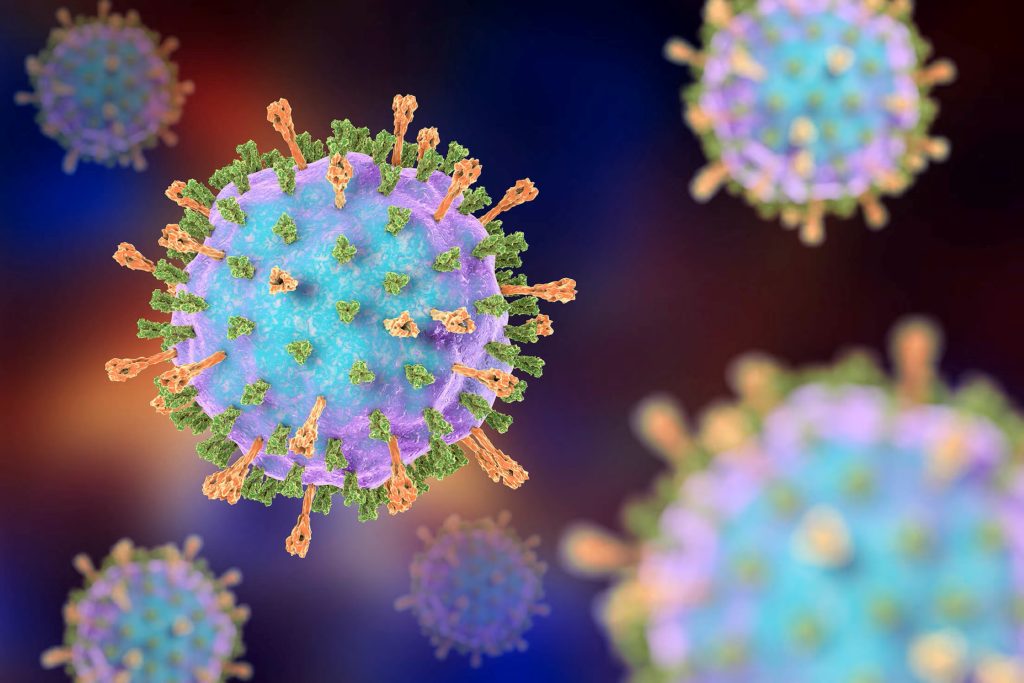State of Hawaiʻi confirms mumps case on the Big Island
The Hawaiʻi Department of Health confirmed a case of mumps, a contagious viral infection that primarily affects the salivary glands, causing painful swelling and inflammation, in a person on the Big Island.

The state is reporting that the infection is a community-acquired case and not travel-related, suggesting that mumps may be circulating on the island. The state Health Department is closely monitoring suspected cases to prevent further spread.
The confirmed infected person attended an event between 4:30 and 6 p.m. Sept. 25 at Harold H. Higashihara Park in Kailua-Kona.
State health officials advise anyone who attended this event to contact the Hawaiʻi Department of Health for guidance.
People who were at the event should monitor themselves for symptoms until Oct. 20 — which would be 25 days after exposure.
Anyone who develops symptoms should isolate themselves immediately and contact their health care provider. They should remain in isolation for 5 days after the onset of symptoms.
Health care providers should evaluate patients who report exposure at the event for symptoms of mumps and verify their vaccination status.
The state Health Department is working with the confirmed infected person’s family, health care providers and Hawaiʻi County officials to identify and notify close contacts.
Mumps spreads through coughing, sneezing, talking or sharing items such as cups or eating utensils. Symptoms typically appear 12 to 25 days after exposure.
Symptoms include:
- Swollen, painful salivary glands (puffy cheeks or a tender jaw).
- Fever.
- Headache.
- Muscle aches.
- Tiredness.
- Loss of appetite.
Anyone who develops symptoms is urged to:
- Stay home and avoid contact with others, especially infants, pregnant people and those with weakened immune systems.
- Call a health care provider before visiting a clinic or hospital to avoid exposing others.
There is no specific treatment for mumps. Care focuses on rest, fluids and fever control.
While most people who become ill with mumps recover fully, it can cause serious illness in some, including inflammation of the testicles or ovaries; pancreatitis; inflammation of the brain, called encephalitis, or tissue covering the brain or spinal cord, called meningitis; and loss of hearing.
“While mumps is preventable with vaccination, even one case is concerning because of how easily the virus spreads,” said State Epidemiologist Dr. Sarah Kemble in the state’s notice about the confirmed Big Island case. “We encourage all Hawaiʻi residents to check their vaccination records and ensure they and their families are fully protected with two doses of the [measles, mumps and rubella] vaccine.”
Children should receive two doses of the measles, mumps and rubella vaccine by the time they are 6 years old. Adults born in or after 1957 should have documentation of vaccination or a blood test showing immunity.
Certain adults at higher risk of exposure might need an additional vaccine dose.
The measles, mumps and rubella vaccine is available at local pharmacies. Click here to find a vaccination location.
Contact the pharmacy or clinic beforehand to confirm vaccine availability and any restrictions. Pharmacies cannot vaccinate children younger than 3 years old.
Hawaiʻi previously experienced a significant mumps outbreak from March 2017 through October 2018, with 1,009 confirmed cases statewide.
Most cases were on Oʻahu, but Hawaiʻi, Kauaʻi and Maui counties also had confirmed cases.
Visit the Hawaiʻi Department of Health Disease Outbreak Control Division website for additional information about mumps and vaccination.



